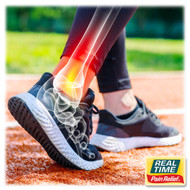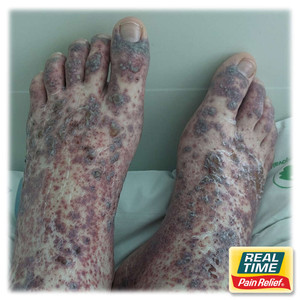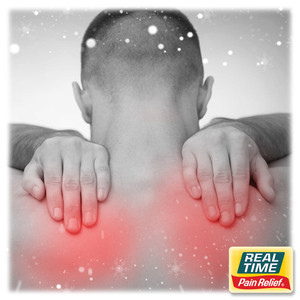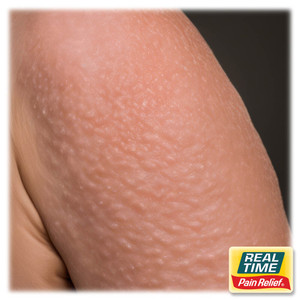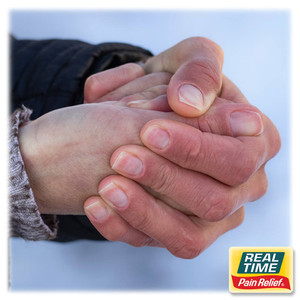Recovery Tips for Common Summer Injuries: Ankles, Shoulders, Knees
Posted by Dennis R Escalera on 31st Aug 2025
Introduction
Summer invites us outdoors for recreation, fitness, and family fun—but it also brings a surge in injuries, particularly to the ankles, shoulders, and knees. From sprained ankles during hikes, to sore knees after hours of activity, to overused shoulders from swimming or throwing sports, these body parts often bear the brunt of summer excitement.
Fortunately, most minor summer injuries can be treated at home using practical recovery strategies and topical pain relief made with nature’s ingredients. In this article, we’ll explore the most common joint injuries from summer activities, how to manage them effectively, and when to seek further medical attention.
Common Summer Injury #1: Ankle Strains and Sprains
What Causes It?
- Walking on uneven terrain while hiking
- Running or playing sports on grass, sand, or pavement
- Wearing unsupportive footwear like flip-flops or sandals
- Sudden movements or missteps
Signs and Symptoms
- Pain and tenderness on the outer or inner ankle
- Swelling or bruising
- Instability while walking
- Difficulty bearing weight
Immediate Care
Follow the R.I.C.E. protocol:
- Rest the ankle for 24–48 hours
- Ice it for 15–20 minutes every 2–3 hours
- Compress using an elastic bandage
- Elevate the ankle above heart level
Ongoing Recovery
- Perform gentle range-of-motion exercises to prevent stiffness
- Gradually introduce weight-bearing as pain decreases
- Massage with topical creams containing menthol or arnica to relieve soreness
- Wear supportive footwear or a brace if needed during recovery
When to See a Doctor
- Severe swelling or bruising
- Inability to walk or bear weight
- Suspected fracture or dislocation
Common Summer Injury #2: Shoulder Overuse and Rotator Cuff Strain
What Causes It?
- Repeated overhead motions (e.g., swimming, volleyball, kayaking)
- Throwing sports (baseball, frisbee)
- Carrying heavy loads or coolers
- Sleeping in awkward positions during travel
Signs and Symptoms
- Dull ache in the shoulder
- Weakness in lifting or reaching
- Clicking or popping sensation
- Pain that worsens with movement or at night
Immediate Care
- Rest the arm and avoid overhead activity
- Apply cold compresses in the first 48 hours, then switch to warm packs
- Use a topical anti-inflammatory cream to reduce discomfort
- Perform shoulder pendulum exercises to maintain range of motion without strain
Ongoing Recovery
- Strengthen shoulder muscles gradually using resistance bands
- Stretch the chest and upper back to reduce tension
- Apply topical creams with turmeric or boswellia to ease inflammation
- Avoid returning to overhead sports until pain-free for 7+ days
When to See a Doctor
- Pain lasting more than 2 weeks
- Noticeable weakness or limited movement
- Sharp, sudden pain during activity
Common Summer Injury #3: Knee Pain from Overuse or Impact
What Causes It?
- Hiking steep trails
- Long walks on hard surfaces
- Biking or running without proper stretching
- Jumping or pivoting during sports
Types of Knee Pain
- Patellar tendinitis (jumper’s knee): pain at the front of the knee
- Iliotibial band syndrome: pain on the outer knee
- Meniscus irritation: pain, popping, or locking during movement
Signs and Symptoms
- Pain when bending, squatting, or going downstairs
- Swelling or stiffness
- Tenderness around the kneecap or joint line
- Clicking or catching sensation
Immediate Care
- Limit activity for a few days
- Apply ice packs several times daily
- Use a knee brace or compression sleeve for support
- Massage the area with pain relief cream containing arnica or menthol
Ongoing Recovery
- Perform quad and hamstring stretches daily
- Strengthen hips and glutes to reduce stress on knees
- Avoid kneeling or squatting for extended periods
- Use topical solutions with capsaicin to ease persistent soreness
When to See a Doctor
- Persistent swelling
- Buckling or instability
- Sudden loss of range of motion
Nature’s Ingredients for Summer Injury Recovery
Topical creams with nature’s ingredients provide localized, non-invasive pain relief for mild to moderate injuries. They are especially helpful during recovery phases to reduce discomfort, swelling, and promote healing.
Here’s a breakdown of key natural ingredients for each injury:
|
Ingredient |
Best For |
Why It Helps |
|
Arnica Montana |
Sprains, bruises, and swelling |
Reduces inflammation and helps with healing of soft tissue injuries |
|
Menthol |
Soreness and overuse |
Provides a cooling sensation and helps reduce pain signaling |
|
Capsaicin |
Lingering joint aches |
Blocks pain transmission from nerves |
|
Turmeric (Curcumin) |
Knee and shoulder inflammation |
Contains natural anti-inflammatory compounds |
|
Boswellia Serrata |
Tendon strain and joint pain |
Improves mobility and reduces cartilage degradation |
|
Aloe Vera |
Skin irritation and muscle tension |
Soothes skin and supports hydration of affected tissues |
These ingredients can be applied multiple times daily, directly to sore or injured areas. Many topical formulas combine these ingredients for synergistic effects.
Practical Tips to Prevent Future Injuries
- Warm up properly before any physical activity
- Wear appropriate footwear with arch and ankle support
- Cross-train to avoid overusing the same joints
- Stay hydrated to maintain joint fluidity and prevent cramps
- Listen to your body—soreness is a sign to slow down
Post-Injury Recovery Timeline
|
Injury |
Typical Recovery Time |
|
Mild ankle sprain |
1–2 weeks |
|
Rotator cuff strain |
2–4 weeks |
|
Knee overuse pain |
1–3 weeks |
|
Tendinitis (shoulder/knee) |
4–6 weeks (with rest and rehab) |
Using a topical recovery routine can help reduce this recovery time and support your return to movement without setbacks.
When to Consider Professional Care
While most mild injuries improve with home treatment, don’t hesitate to consult a medical professional if:
- Pain worsens over time or interferes with sleep
- You notice visible deformities or joint instability
- There’s a loss of sensation, numbness, or tingling
- There’s no improvement after 1–2 weeks of self-care
A physical therapist, orthopedic specialist, or primary care doctor can help confirm the diagnosis and recommend more advanced care options, including physical therapy or imaging.
Conclusion
Ankles, shoulders, and knees often suffer quietly after the busy summer season. Fortunately, with the right self-care practices, proper rest, and topical creams made with nature’s ingredients, most summer joint injuries can heal smoothly and naturally. By acting early and treating your joints with care, you can prevent discomfort from becoming a chronic issue—and step into fall with strength and balance.
References
- Evidence-Based Practice / LWW – Capsaicin patch study in neuropathic pain Lippincott Journals+1
- PubMed meta-analysis – Capsaicin for osteoarthritis pain up to 20 weeks OARS-I Journal

